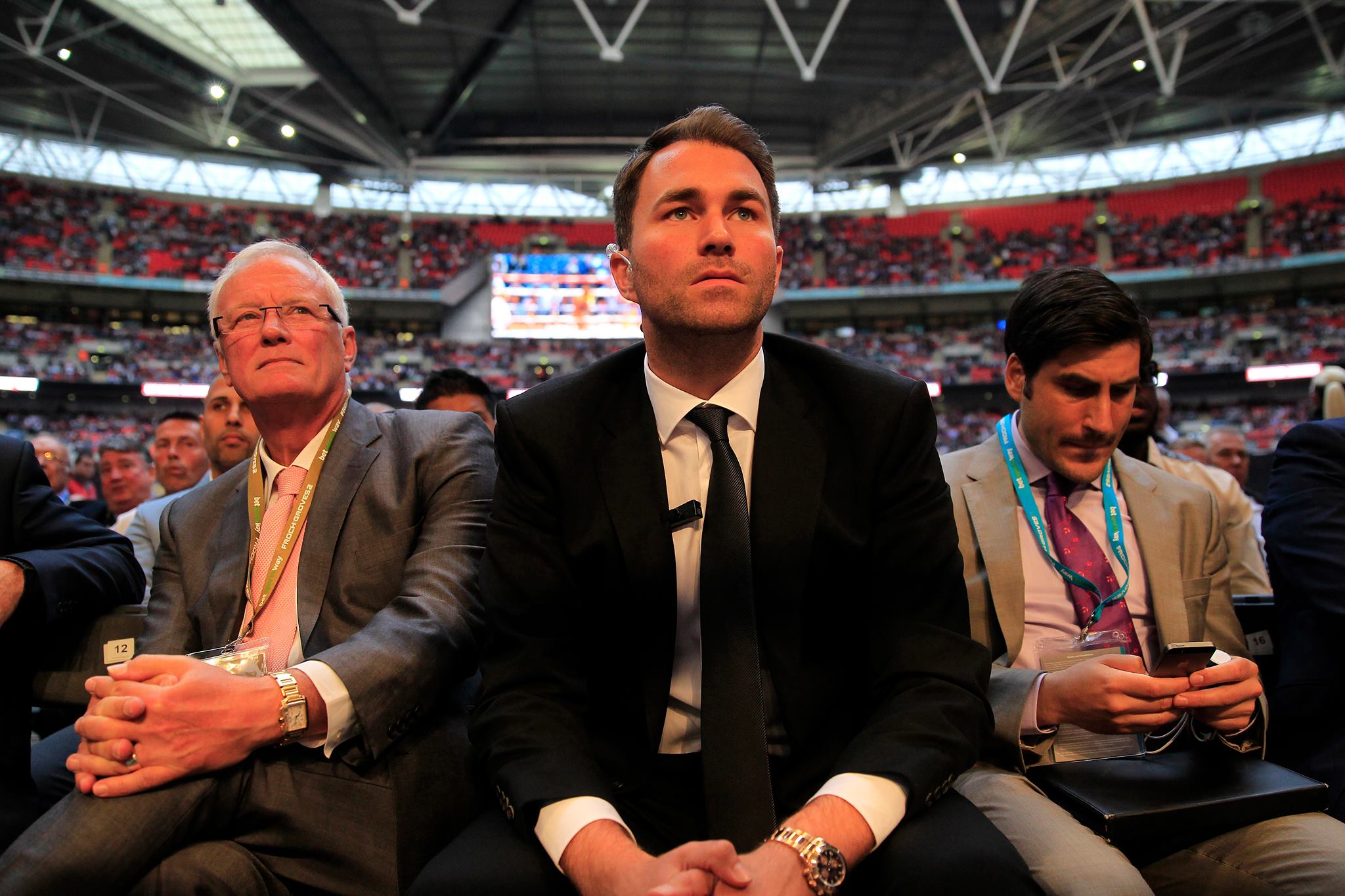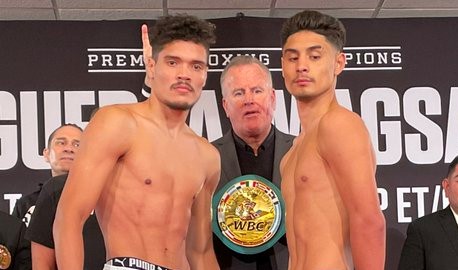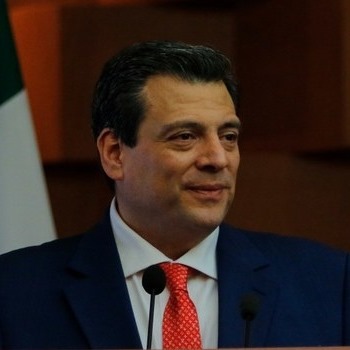By: Sean Crose
“I’m a primary care sports medicine doctor,” John Neidecker tells me. Dr. Neidecker, an engaging individual, is the man behind a major Consensus Statement from the Association of Ringside Physicians., a Consensus which has recently been published by the British Journal of Sports Medicine. The subject? “Concussion management in combat sports.” Neidecker, it should be noted, is a huge fan of combat sports himself. A veteran ringside physician, he’s seen firsthand how impressive the fight game can be. “Combat sports has always been a love of mine,” he says.

Yet Neidecker is also a man who wants to see these sports improve in the area of fighter safety. For instance, “when it comes to ringside medicine,” he tells me, “there’s a large degree of background.” In other words, a ringside physician might or might not be the most qualified person for the task at hand. “You don’t need my background to be a ringside doctor,” he adds (Neidecker specializes in “concussion sports management”). As he sees it: “If you’re going to be a ringside physician, you need to know ringside medicine.” It all seems obvious enough, yet the obvious is sometimes overlooked in the arena of combat sports.
What’s so stunning about the Association’s Consensus is that at least some of its’ recommendations haven’t been universally accepted for decades. For instance, the Association wants fighters to be suspended from fighting professionally and/or sparring for a reasonably short period of time after they have suffered a knockout or TKO loss. They also want these fighters to be cleared by a specialist before returning to the sport. Such measures will allow these fighters to keep from being damaged severely in the practice of their trade while still permitting them time to make a living. A first time KO or TKO without loss of consciousness, for instance, would require a suspension of 30 days…hardly a draconian measure in an era where the top boxers in the world fight once or twice a year.
Interestingly enough, the seed that would eventually grow into the Consensus began to take shape during the course of Neidecker’s daily life (he had just treated three high school football players on the day we spoke). “I noticed the gap myself,” he says, “between what was being done in combat sports compared to what was being done in other sports.” It became clear to Neidecker that “we really need to do something about this.” And how long did it take the Association to create the Consensus Statement available today? Around two years. “It’s a monumental task,” he says of working on such a project.
“We actually put out a document on our website,” he claims. The Association knew, though, that in order to be taken seriously, the Consensus had to be “published in a major medical journal.” Enter the British Journal of Sports Medicine. “It’s international,” Neidecker says of the publication. “This journal has a lot of exposure.” What’s more, Neidecker claims “this is the journal where the most recent consensus in non-combat sports was published in.” “The fact that other sports have taken measures that combat sports haven’t in order to lessen the impact of head trauma clearly troubles Neidecker. “Combat sports should be held to a higher standard than other sports,” he tells me.
The physician makes it clear, however, that boxing isn’t like other sports. There’s no one ruling body that oversees the sweet science. “These are guidelines,” he says of the contents of the Consensus. “It’s up to the various commissions” to decide to implement those guidelines. Yet Neidecker also states a ringside physician has a legal right to enact the Consensus’ guidelines, even if a particular commission isn’t interested in doing so. “These things can be enforced without the commission enforcing them,” he says. “You can implement them.”
Neidecker claims the contents of the Consensus aren’t permanent . In fact, he says the Consensus will be altered over time. “We’re going to revise,” he tells me. “For the sport to survive, you need to adapt.” Unlike some who are critical of boxing for the danger it represents, this ringside doctor is not hostile to the athletic endeavors he wishes to impact.
“You don’t do this,” he says, “unless you love it.”
read more at:
https://bjsm.bmj.com/content/early/2018/07/26/bjsports-2017-098799



















Eve Moses
08/01/2023 at 6:51 pm
Good post! We will be linking to this particularly great post on our site. Keep up the great writing.
Alice Greer
08/06/2023 at 12:34 pm
Hello to all, because I really enjoy reading the blog posts that are published often on this website. It carries enjoyable things.
LarryFex
06/25/2024 at 12:15 am
pin-up casino giris: pin up apk yukle – pin up casino azerbaycan
Williamfrumn
06/26/2024 at 7:45 am
reputable mexican pharmacies online: mexican northern doctors – buying prescription drugs in mexico online
Williamfrumn
06/26/2024 at 10:03 am
п»їbest mexican online pharmacies: Mexico pharmacy that ship to usa – buying prescription drugs in mexico online
Richardled
06/26/2024 at 10:10 am
mexico drug stores pharmacies [url=https://northern-doctors.org/#]mexican pharmacy online[/url] п»їbest mexican online pharmacies
JeffreyMok
06/26/2024 at 11:54 am
http://northern-doctors.org/# reputable mexican pharmacies online
Richardled
06/26/2024 at 12:52 pm
buying from online mexican pharmacy [url=http://northern-doctors.org/#]mexican pharmacy northern doctors[/url] п»їbest mexican online pharmacies
JeffreyMok
06/26/2024 at 12:55 pm
https://northern-doctors.org/# mexican border pharmacies shipping to usa
Williamfrumn
06/26/2024 at 1:26 pm
reputable mexican pharmacies online: mexican pharmacy online – purple pharmacy mexico price list
Williamfrumn
06/26/2024 at 3:48 pm
mexico pharmacies prescription drugs: mexican pharmacy – purple pharmacy mexico price list
Richardled
06/26/2024 at 5:39 pm
mexican rx online [url=https://northern-doctors.org/#]mexican northern doctors[/url] buying from online mexican pharmacy
Williamfrumn
06/26/2024 at 7:35 pm
mexican online pharmacies prescription drugs: mexican pharmacy – mexican pharmaceuticals online
JeffreyMok
06/26/2024 at 8:35 pm
https://northern-doctors.org/# buying prescription drugs in mexico
Williamfrumn
06/26/2024 at 9:28 pm
medication from mexico pharmacy: Mexico pharmacy that ship to usa – mexican pharmaceuticals online
JeffreyMok
06/26/2024 at 9:30 pm
https://northern-doctors.org/# mexico drug stores pharmacies
JeffreyMok
06/27/2024 at 12:21 am
http://northern-doctors.org/# mexican pharmacy
Richardled
06/27/2024 at 12:35 am
mexican rx online [url=https://northern-doctors.org/#]Mexico pharmacy that ship to usa[/url] п»їbest mexican online pharmacies
JeffreyMok
06/27/2024 at 2:24 am
https://northern-doctors.org/# mexican pharmacy
Williamfrumn
06/27/2024 at 3:03 am
mexico drug stores pharmacies: mexican pharmacy – medication from mexico pharmacy
JeffreyMok
06/27/2024 at 3:28 am
https://northern-doctors.org/# mexico drug stores pharmacies
Richardled
06/27/2024 at 3:53 am
mexican rx online [url=https://northern-doctors.org/#]purple pharmacy mexico price list[/url] mexico pharmacies prescription drugs
JeffreyMok
06/27/2024 at 6:25 am
https://northern-doctors.org/# mexico pharmacy
JeffreyMok
06/27/2024 at 8:24 am
https://northern-doctors.org/# mexican online pharmacies prescription drugs
Williamfrumn
06/27/2024 at 8:37 am
buying from online mexican pharmacy: northern doctors – п»їbest mexican online pharmacies
Richardled
06/27/2024 at 9:55 am
best online pharmacies in mexico [url=http://northern-doctors.org/#]Mexico pharmacy that ship to usa[/url] pharmacies in mexico that ship to usa
Williamfrumn
06/27/2024 at 10:40 am
mexico pharmacy: Mexico pharmacy that ship to usa – medicine in mexico pharmacies
Richardled
06/27/2024 at 1:14 pm
reputable mexican pharmacies online [url=https://northern-doctors.org/#]Mexico pharmacy that ship to usa[/url] buying prescription drugs in mexico online
JeffreyMok
06/27/2024 at 4:02 pm
http://northern-doctors.org/# mexican mail order pharmacies
Richardled
06/27/2024 at 7:02 pm
mexican mail order pharmacies [url=https://northern-doctors.org/#]mexican northern doctors[/url] purple pharmacy mexico price list
Williamfrumn
06/27/2024 at 8:36 pm
purple pharmacy mexico price list: Mexico pharmacy that ship to usa – buying prescription drugs in mexico
JeffreyMok
06/27/2024 at 10:02 pm
https://northern-doctors.org/# mexican online pharmacies prescription drugs
Richardled
06/27/2024 at 10:09 pm
purple pharmacy mexico price list [url=https://northern-doctors.org/#]mexican pharmacy[/url] buying prescription drugs in mexico
Williamfrumn
06/28/2024 at 2:02 am
reputable mexican pharmacies online: Mexico pharmacy that ship to usa – mexican drugstore online
Williamfrumn
06/28/2024 at 3:38 am
mexico pharmacies prescription drugs: northern doctors – mexico drug stores pharmacies
Richardled
06/28/2024 at 4:00 am
mexican rx online [url=https://northern-doctors.org/#]buying prescription drugs in mexico online[/url] mexico drug stores pharmacies
JeffreyMok
06/28/2024 at 5:05 am
http://northern-doctors.org/# medicine in mexico pharmacies
Williamfrumn
06/28/2024 at 5:12 am
buying prescription drugs in mexico: northern doctors – mexican mail order pharmacies
JeffreyMok
06/28/2024 at 5:56 am
http://northern-doctors.org/# purple pharmacy mexico price list
Richardled
06/28/2024 at 7:06 am
buying prescription drugs in mexico online [url=https://northern-doctors.org/#]mexican northern doctors[/url] best online pharmacies in mexico
Williamfrumn
06/28/2024 at 8:00 am
best online pharmacies in mexico: northern doctors – mexican pharmacy
Williamfrumn
06/28/2024 at 8:25 am
mexico drug stores pharmacies: mexican pharmacy – mexico pharmacy
JeffreyMok
06/28/2024 at 8:36 am
http://northern-doctors.org/# buying from online mexican pharmacy
JeffreyMok
06/28/2024 at 11:19 am
https://northern-doctors.org/# mexican mail order pharmacies
Richardled
06/28/2024 at 12:58 pm
mexican mail order pharmacies [url=http://northern-doctors.org/#]northern doctors[/url] mexican rx online
JeffreyMok
06/28/2024 at 1:05 pm
https://northern-doctors.org/# mexican mail order pharmacies
JeffreyMok
06/28/2024 at 1:58 pm
http://northern-doctors.org/# reputable mexican pharmacies online
Williamfrumn
06/28/2024 at 2:36 pm
mexican pharmacy: mexican pharmacy northern doctors – mexican pharmaceuticals online
JeffreyMok
06/28/2024 at 3:48 pm
http://northern-doctors.org/# best online pharmacies in mexico
Richardled
06/28/2024 at 4:10 pm
mexican mail order pharmacies [url=https://northern-doctors.org/#]mexican northern doctors[/url] medicine in mexico pharmacies
Williamfrumn
06/28/2024 at 6:03 pm
mexico pharmacy: northern doctors – medication from mexico pharmacy
JeffreyMok
06/28/2024 at 7:26 pm
http://northern-doctors.org/# mexico pharmacies prescription drugs
Williamfrumn
06/28/2024 at 9:24 pm
buying prescription drugs in mexico online: Mexico pharmacy that ship to usa – п»їbest mexican online pharmacies
Williamfrumn
06/28/2024 at 9:49 pm
buying prescription drugs in mexico: Mexico pharmacy that ship to usa – mexican drugstore online
Richardled
06/28/2024 at 10:02 pm
buying from online mexican pharmacy [url=https://northern-doctors.org/#]mexican pharmacy online[/url] medication from mexico pharmacy
JeffreyMok
06/29/2024 at 12:38 am
https://northern-doctors.org/# mexican rx online
Richardled
06/29/2024 at 1:13 am
mexico drug stores pharmacies [url=https://northern-doctors.org/#]mexican pharmacy online[/url] buying prescription drugs in mexico
Jeffreyber
06/29/2024 at 2:12 am
http://cmqpharma.com/# mexican pharmacy
mexican pharmaceuticals online
Jeffreyber
06/29/2024 at 2:46 am
https://cmqpharma.com/# medication from mexico pharmacy
mexican rx online
Ronnienop
06/29/2024 at 7:10 am
mexico pharmacies prescription drugs [url=https://cmqpharma.com/#]mexico pharmacy[/url] mexican border pharmacies shipping to usa
Ronnienop
06/29/2024 at 9:00 am
buying prescription drugs in mexico online [url=http://cmqpharma.com/#]cmq pharma[/url] mexico drug stores pharmacies
Ronnienop
06/29/2024 at 3:36 pm
reputable mexican pharmacies online [url=https://cmqpharma.online/#]online mexican pharmacy[/url] best online pharmacies in mexico
Ronnienop
06/29/2024 at 5:39 pm
mexican pharmacy [url=http://cmqpharma.com/#]cmq pharma mexican pharmacy[/url] mexican rx online
Ronnienop
06/29/2024 at 6:44 pm
п»їbest mexican online pharmacies [url=https://cmqpharma.com/#]cmq pharma mexican pharmacy[/url] medicine in mexico pharmacies
Ronnienop
06/29/2024 at 8:47 pm
mexican border pharmacies shipping to usa [url=https://cmqpharma.online/#]mexican mail order pharmacies[/url] mexican rx online
Ronnienop
06/30/2024 at 12:26 am
reputable mexican pharmacies online [url=https://cmqpharma.online/#]cmq pharma[/url] medication from mexico pharmacy
Ronnienop
06/30/2024 at 2:15 am
purple pharmacy mexico price list [url=https://cmqpharma.online/#]cmq pharma mexican pharmacy[/url] reputable mexican pharmacies online
Ronnienop
06/30/2024 at 3:12 am
mexican mail order pharmacies [url=http://cmqpharma.com/#]mexico pharmacy[/url] mexico drug stores pharmacies
Jeffreyber
07/02/2024 at 2:34 am
https://cmqpharma.online/# mexico drug stores pharmacies
best online pharmacies in mexico
Ronnienop
07/02/2024 at 3:14 am
mexican mail order pharmacies [url=https://cmqpharma.com/#]mexican pharmacy online[/url] mexico pharmacy
Ronnienop
07/02/2024 at 4:16 am
mexico drug stores pharmacies [url=http://cmqpharma.com/#]mexican pharmacy online[/url] mexico drug stores pharmacies
EdwardLoobe
07/20/2024 at 6:10 am
https://indiapharmast.com/# cheapest online pharmacy india
EdwardLoobe
07/20/2024 at 9:52 am
http://foruspharma.com/# mexican border pharmacies shipping to usa
Davidtoows
07/20/2024 at 10:44 am
mail order pharmacy india: п»їlegitimate online pharmacies india – world pharmacy india
CharlesRor
07/20/2024 at 6:29 pm
best online pharmacies in mexico [url=https://foruspharma.com/#]mexico pharmacies prescription drugs[/url] mexico drug stores pharmacies
EdwardLoobe
07/20/2024 at 6:38 pm
http://foruspharma.com/# mexico pharmacies prescription drugs
CharlesRor
07/20/2024 at 11:25 pm
mail order pharmacy india [url=http://indiapharmast.com/#]online shopping pharmacy india[/url] indian pharmacy online
Michaelmoolo
07/21/2024 at 7:34 am
mexican rx online: mexican rx online – mexico pharmacy
Davidtoows
07/21/2024 at 7:39 am
my canadian pharmacy: canadian medications – best online canadian pharmacy
EdwardLoobe
07/21/2024 at 8:40 am
http://indiapharmast.com/# pharmacy website india
Myronnepay
07/21/2024 at 11:15 am
http://doxycyclinedelivery.pro/# doxycycline 400 mg price
where buy clomid online [url=http://clomiddelivery.pro/#]clomid generic[/url] buying cheap clomid without insurance
Jamesjam
07/21/2024 at 12:42 pm
buy cipro without rx: cipro ciprofloxacin – cipro online no prescription in the usa
Myronnepay
07/21/2024 at 9:08 pm
http://paxloviddelivery.pro/# paxlovid buy
doxycycline acne [url=http://doxycyclinedelivery.pro/#]how to get doxycycline without prescription[/url] doxycycline order uk
Jamesjam
07/21/2024 at 10:34 pm
Paxlovid buy online: paxlovid for sale – paxlovid for sale
Myronnepay
07/22/2024 at 6:25 am
http://paxloviddelivery.pro/# buy paxlovid online
order amoxicillin no prescription [url=http://amoxildelivery.pro/#]amoxicillin without a doctors prescription[/url] can i buy amoxicillin over the counter
Jamesjam
07/22/2024 at 11:09 am
doxycycline 300 mg price: doxycycline 1000mg best buy – doxycycline pills price in south africa
Jamesjam
07/22/2024 at 2:08 pm
buying cheap clomid no prescription: where can i get clomid tablets – can i get generic clomid pill
Myronnepay
07/22/2024 at 4:05 pm
http://doxycyclinedelivery.pro/# where can i buy doxycycline without prescription
cipro [url=http://ciprodelivery.pro/#]buy ciprofloxacin over the counter[/url] ciprofloxacin generic
Jamesjam
07/22/2024 at 11:48 pm
ciprofloxacin mail online: buy cipro cheap – where can i buy cipro online
Myronnepay
07/23/2024 at 1:18 am
http://paxloviddelivery.pro/# paxlovid pill
buy ciprofloxacin over the counter [url=https://ciprodelivery.pro/#]buy ciprofloxacin over the counter[/url] ciprofloxacin generic price
Jamesjam
07/23/2024 at 2:52 am
amoxicillin 500: how to buy amoxycillin – amoxicillin 500 mg price
Myronnepay
07/23/2024 at 10:39 am
https://amoxildelivery.pro/# generic amoxicillin
paxlovid for sale [url=http://paxloviddelivery.pro/#]Paxlovid over the counter[/url] buy paxlovid online
Jamesjam
07/23/2024 at 12:28 pm
doxycycline 100mg capsules price: can you buy doxycycline over the counter in canada – doxycycline 10mg price
Myronnepay
07/23/2024 at 8:29 pm
http://amoxildelivery.pro/# amoxicillin buy no prescription
can we buy amoxcillin 500mg on ebay without prescription [url=https://amoxildelivery.pro/#]amoxicillin 775 mg[/url] order amoxicillin uk
Jamesjam
07/24/2024 at 1:11 am
paxlovid for sale: paxlovid pill – paxlovid generic
Jamesjam
07/24/2024 at 4:19 am
purchase cipro: antibiotics cipro – buy cipro online without prescription
Myronnepay
07/24/2024 at 5:52 am
http://doxycyclinedelivery.pro/# cheap doxycycline
п»їpaxlovid [url=http://paxloviddelivery.pro/#]paxlovid india[/url] paxlovid pill
Jamesjam
07/24/2024 at 1:56 pm
doxycycline 300 mg cost: 100mg doxycycline – doxycycline cream over the counter
Jamesjam
07/24/2024 at 4:56 pm
buy cipro without rx: cipro for sale – where can i buy cipro online
Jamesjam
07/25/2024 at 2:26 am
where can i buy amoxocillin: over the counter amoxicillin canada – price for amoxicillin 875 mg